Have you ever faced the dilemma of wanting a kitchen that blends style with functionality but felt overwhelmed by where to start? At Total Construction Company, we provide you with a streamlined guide to remodeling your kitchen, ensuring success without the common pitfalls. In this comprehensive post, we’ll delve into setting a realistic budget to keep your finances in check, selecting a design that not only suits your taste but also addresses environmental concerns, and why bamboo might just be the material you need. We aim to solve the complexity of choice and budget management during a remodel, offering you valuable insights on working with skilled contractors for a kitchen you’ll love. Engage with our guide, and you’ll come away equipped with the knowledge to transform your kitchen space wisely and efficiently.
Planning a Successful Kitchen Remodel: Essential Steps
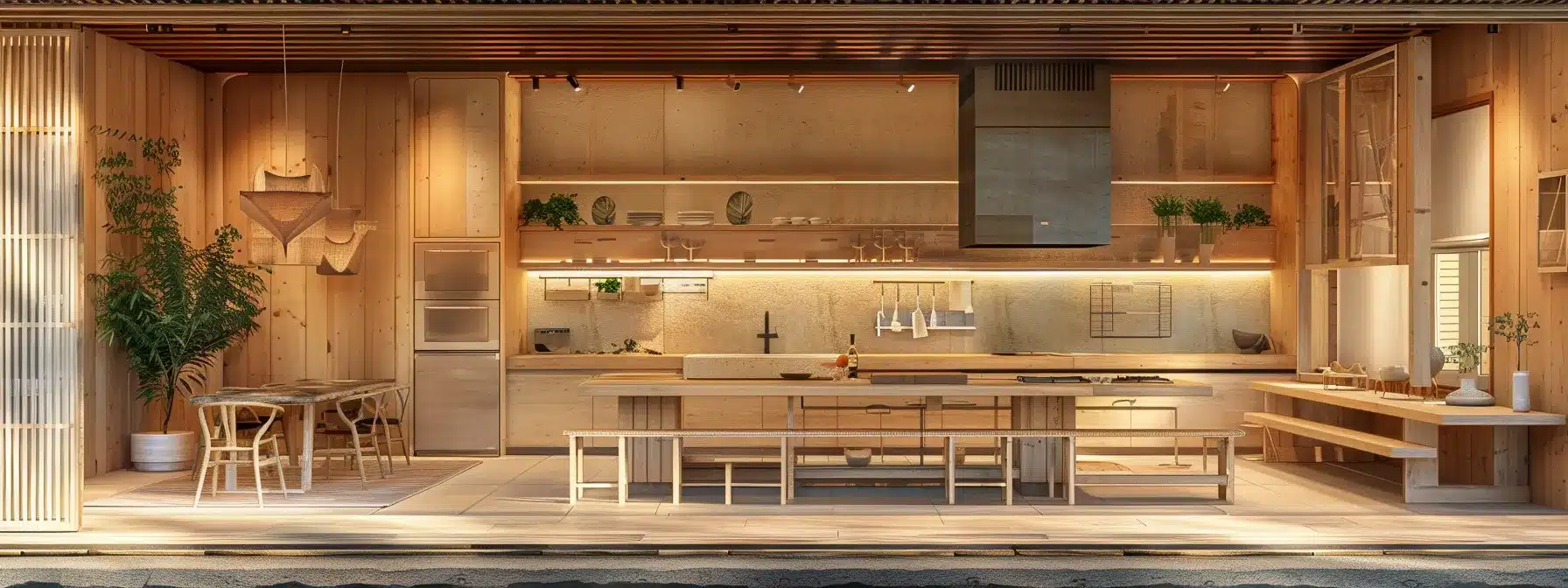
Embarking on a kitchen remodel requires a solid understanding of your current needs and specific goals. I will guide you through assessing Total Credit Control and the function and flow of your present kitchen space, highlighting areas where heat efficiency and water usage can be enhanced for sustainability. Additionally, we’ll tap into design principles to create an optimized layout, utilizing materials like wood to maximize both form and function. Each step is crucial for a remodel that blends aesthetics with efficiency.
Assess Your Current Kitchen Needs and Identify Goals
Embarking on the remodel journey, understanding how your current kitchen falls short on electricity management and energy efficiency is key. Observing areas with excessive electrical usage allows you to plan for enhanced efficient energy use post-remodel. As a construction professional who’s seen the transformation of numerous homes, I assure you the transition to an environmentally friendly kitchen not only reduces costs but also contributes to a healthier planet.
Your cabinetry layout and lighting are not just about visual appeal but also functionality and light control. Reevaluating your current space can uncover how to better position cabinetry to maximize storage and accessibility while integrating natural light sources to reduce dependency on artificial lighting. With my expertise, we can revive your kitchen into a bright, welcoming space that functions seamlessly while keeping sustainability at the forefront of design.
Create an Efficient Kitchen Layout That Maximizes Space
In crafting an efficient kitchen layout, prioritizing flow and function is essential. I’ve found that strategic placement of your dishwasher near the sink and integrating recycling bins into cabinetry reduces floor traffic and enhances kitchen efficiency. This thoughtful positioning not only streamlines cleanup but also fosters a more environmentally conscious space, aligning with my core commitment to sustainability.
Moreover, optimizing for daylight utilization can significantly elevate the ambiance of your kitchen while mitigating air pollution from artificial sources. By design, I position work areas to take full advantage of natural light, which not only conserves energy but also creates a warm and inviting atmosphere. Through these targeted layout choices, we transform your kitchen into a haven of daylight-enhanced serenity without compromising on stylish, practical efficiency.
Setting a Realistic Budget for Your Kitchen Remodel
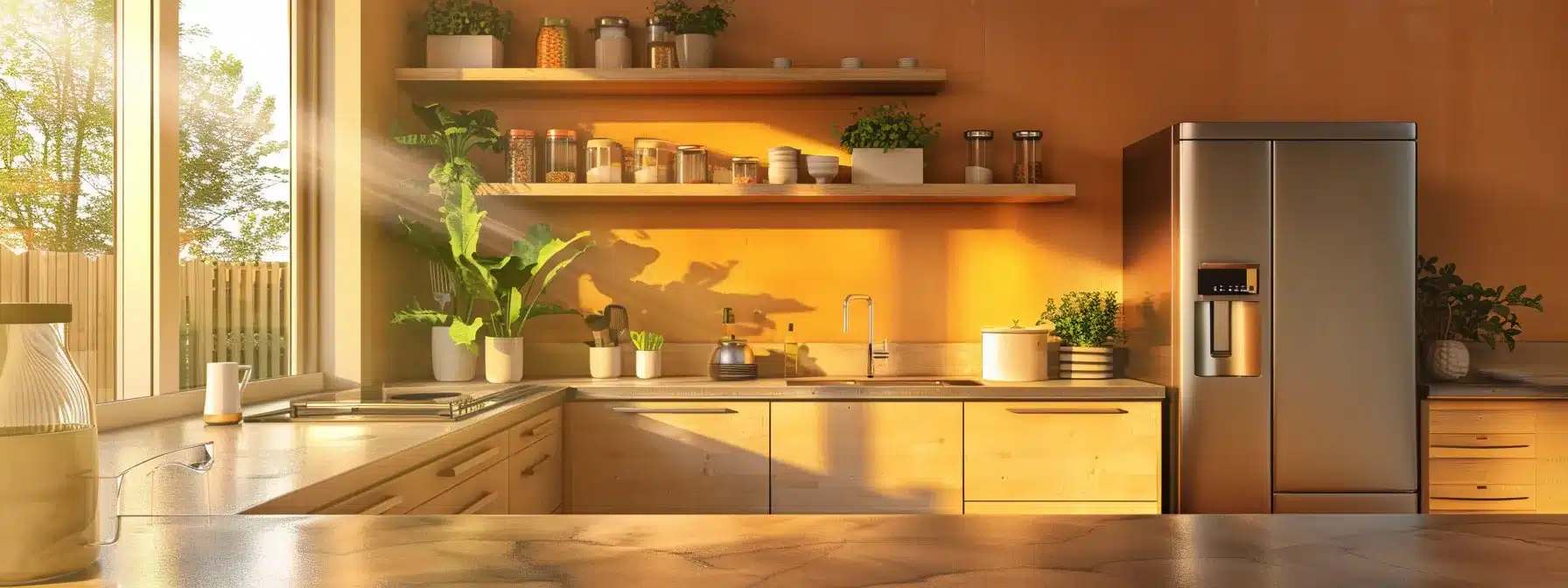
As we explore the nuances of kitchen remodeling success, it’s imperative to focus on establishing a realistic budget. Determining budget limits and evaluating financing options are the initial steps to ensure a financial framework for your project. As we define these boundaries, I’ll also share how to allocate funds effectively, ensuring that major expenses like paint, countertops, and essential appliances such as refrigerators are prioritized without compromising on design quality. Essential to this process is keeping a cautious eye on indirect costs, such as volatile organic compounds in materials, which impact both budget and health.
Determine Your Budget Limits and Financing Options
In establishing your budget for a kitchen remodel, be sure to account for the cost of materials that contribute to a healthier indoor air quality, such as low-emission glass and finishes. These considerations are paramount, as they directly impact your home’s carbon footprint and your family’s well-being. I advise clients to review various financing options, including home equity loans or green financing programs, which might offer incentives for eco-friendly renovations that can enhance your project’s utility and plumbing efficiency.
It’s also critical to look into the long-term savings associated with energy-efficient appliances and water-conserving plumbing fixtures. While these might appear more expensive initially, they reduce monthly utility bills significantly, which should be factored into your financial limits. From my experience, investing in sustainable features can lead to considerable savings over time, thereby offsetting the upfront costs and potentially increasing your property’s market value.
Allocate Funds Appropriately Across Remodeling Expenses
Allocating funds judiciously in a kitchen renovation is vital for achieving both sustainability and style. I recommend that my clients invest in energy conservation through appliances that trim long-term utility costs, as well as water conservation fixtures that diminish water waste. These choices not only enhance sustainable living but also contribute to a more prudent allotment of your budget, allowing you to channel savings into high-quality, durable materials like cork flooring for an eco-friendly touch.
When I guide clients through their kitchen remodel, it’s important to consider the ROI on each aspect, particularly in areas often overlooked, such as insulation. A well-insulated kitchen helps retain heat and reduce energy costs, enhancing your commitment to energy conservation. Similarly, prioritizing a portion of your budget for quality craftsmanship ensures a longer lifespan of your kitchen features, preventing frequent, costly renovations down the line.
Selecting the Perfect Kitchen Design and Style

Turning your attention to aesthetics, it’s crucial to review popular kitchen design trends and styles while being mindful of the materials’ impact on the environment and your health. Choosing colors and materials that suit your aesthetic goes hand in hand with sustainable choices like Forest Stewardship Council-certified wood and low organic compound coatings to reduce carbon emissions and energy consumption. These elements are the cornerstones of an eco-friendly kitchen that embodies your personal style while honoring the planet.
Review Popular Kitchen Design Trends and Styles
In selecting the ideal kitchen design, current trends emphasize sustainability as a crucial part of aesthetics, merging beauty with responsibility towards the planet. As a seasoned professional, I advocate for designs that utilize resources wisely, opting for renewable resources and materials that minimize our ecological footprint. Clients are increasingly drawn to styles that are not only visually stunning but also conscientious of the environment, which reflects a growing commitment to the well-being of our planet.
My experience has shown that an emerging trend is the integration of natural elements with modern design, creating spaces that are both functional and tranquil. The choice of materials like bamboo—a sustainable and quickly renewable resource—conveys an eco-friendly ethos while achieving a refined look. Clients appreciate this thoughtful approach, which harmonizes their personal style with ecological sensibilities, ultimately crafting a kitchen that is a testament to their values and aesthetic preferences.
Choose Colors and Materials That Suit Your Aesthetic
In my extensive experience with home improvement, I’ve learned that selecting colors and materials for your kitchen remodel must reflect your personal health considerations and aesthetic leanings. For instance, if you have a penchant for nature and sustainability, opt for a kitchen countertop of sealed granite, which is durable and less likely to harbor bacteria, thus contributing positively to your kitchen’s cleanliness and your home’s health. Aesthetically pleasing, granite also offers a high-end look that can be the centerpiece of your kitchen’s design.
I also advise incorporating elements that speak to your lifestyle, like integrating a built-in compost system into your island, symbolizing a commitment to reducing food waste. It’s decisions like these that can make your space uniquely yours—functional, healthy, and environmentally conscious. Through attention to such details, I’ve helped many clients achieve a balance between stunning design and practical sustainability, turning their kitchen into a harmonious blend of form and function.
Choosing High-Quality Materials and Appliances
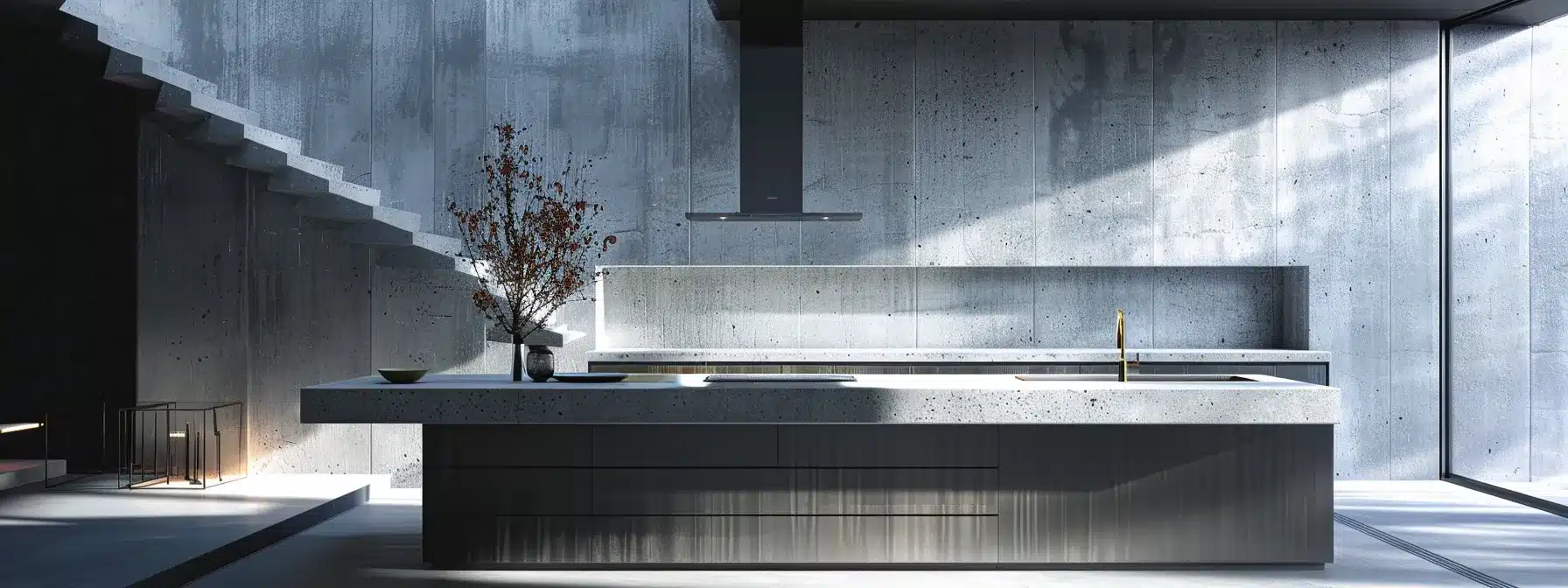
As we delve into the selection of materials and appliances for your kitchen remodel, I will help you navigate the often complex choices between countertop materials such as quartz, and cabinetry options that align with sustainable design and green building principles. We will compare a suite of materials to discern what suits your style and needs, ensuring durability and aesthetic value. I will also guide you in choosing dependable, energy-efficient appliances, marked with the Energy Star for their superior performance and contribution to energy conservation. This considered approach guarantees that the heart of your home is both functional and environmentally sound.
Compare Countertop and Cabinet Material Options
When it comes to selecting materials for your countertops, it’s imperative to consider not only the aesthetic appeal but also the environmental impact. Opting for durable materials like recycled glass or composite can reduce your kitchen’s contribution to pollution and landfill waste, as they are often made from salvaged materials. As Total Construction Company, I’ve observed in my work that utilizing these types of countertops not only promotes waste management but also provides an innovative and stylish cooking surface.
On the cabinet front, the choice between wood and metal options must be deliberate. Wood that is sustainably sourced and certified can offer timeless elegance without burdening the planet’s resources, embodying my commitment to responsible construction practices. Meanwhile, metal cabinets, often crafted from recycled materials, provide a modern look and can further aid in minimizing waste. As a seasoned construction expert, I help my clients weigh these considerations to ensure their kitchen remodel meets both their culinary needs and eco-friendly aspirations.
Select Energy-Efficient and Reliable Appliances
In my years within construction and design, I’ve emphasized the importance of selecting energy-efficient appliances that reduce your home’s energy consumption and carbon footprint. A key investment in this regard is choosing kitchen appliances marked with an Energy Star certification, indicating superior energy efficiency. For instance, opting for a refrigerator that employs advanced cooling technology or a dishwasher with water-saving features is a conscient decision towards environmental protection and long-term financial savings.
Moreover, integrating compact fluorescent lamps (CFLs) and an effective ventilation system can make a substantial difference. Not only do CFLs use about one-third of the energy a traditional bulb would, but quality ventilation equipment also ensures your kitchen remains cool and well-aired, minimizing the need for excess air conditioning. These choices are central to constructing a kitchen space that’s mindful of sustainability and committed to reducing environmental impact.
Hiring Skilled Contractors and Professionals
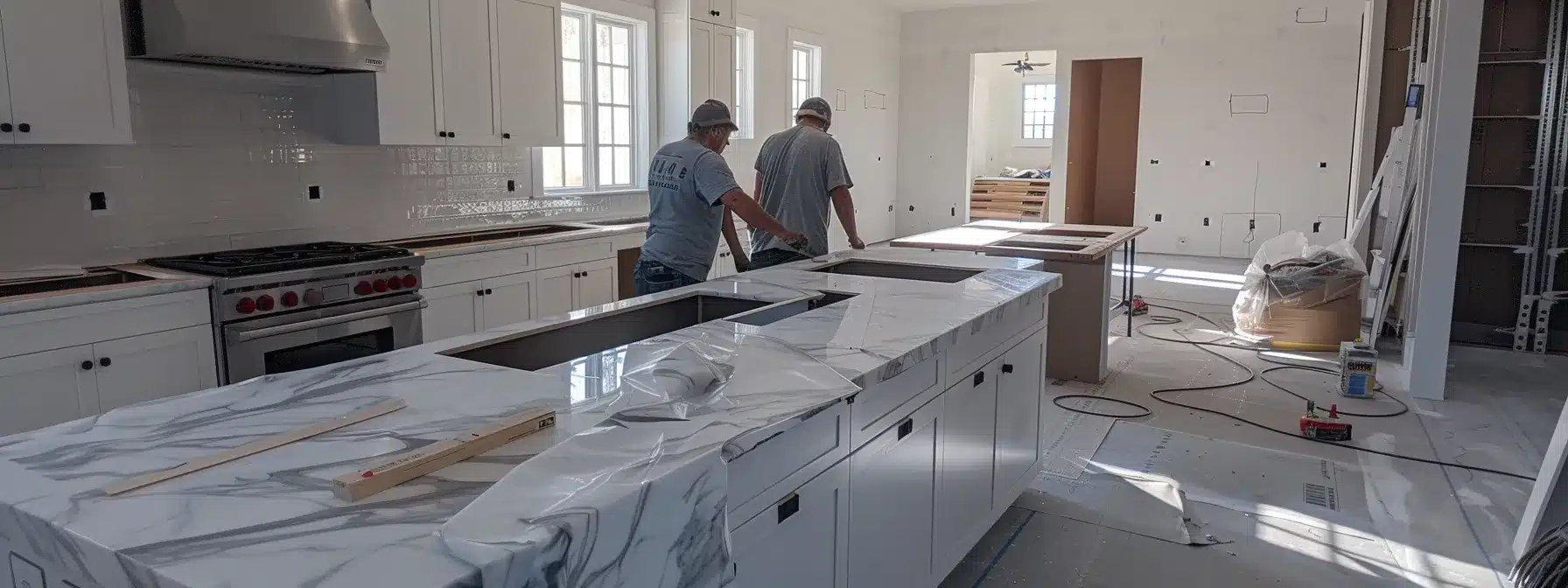
Choosing the right team to bring your kitchen vision to life is as essential as selecting a durable marble countertop or the latest induction cooking technology. In my pursuit to guide you to remodeling success, I emphasize the importance of thoroughly researching and interviewing potential contractors. My experience underscores the necessity of verifying their references, ensuring they hold the proper licenses, and confirming that they are adequately insured. Whether it’s installing sleek kitchen cabinets, laying intricate tile, or pouring a sturdy concrete island, working with skilled professionals guarantees the longevity and safety of your investment.
Research and Interview Potential Contractors Thoroughly
In my career focused on home improvement and interior design, I’ve learned the critical importance of carefully researching and conversing with potential contractors. When your vision includes a state-of-the-art stove with advanced sensors or a custom island fashioned from reclaimed lumber, pinpointing a team capable of bringing these elements to life is non-negotiable. I always ensure they have a portfolio demonstrating their expertise and experience in kitchen remodeling, which instills confidence that they can manage complex installations with finesse.
Diligent inquiry into a contractor’s history with past clients, particularly in projects involving plant-based or sustainable materials, has been pivotal in my selection process. It’s not just about their ability to execute a job, but also about ensuring the delicate balances of aesthetics, functionality, and sustainability are met. Conversations that unveil a contractor’s adaptability, attention to detail, and commitment to timelines are instrumental in fostering a successful collaboration and ultimately, a kitchen remodel that surpasses expectations.
Verify Contractor References, Licenses, and Insurance
In my professional tenure overseeing kitchen renovations, I’ve learned that verifying contractor references is not just about due diligence; it’s about safeguarding your project and your peace of mind. Ensuring that a contractor has a history of responsibly handling materials, with a clear emphasis on reducing scrap and repurposing what others might see as waste, can have a significant impact on reducing greenhouse gas emissions. Done correctly, a kitchen renovation embodies both beauty and a commitment to sustainability, which begins with choosing contractors that respect these values.
Furthermore, I cannot stress enough the importance of confirming that contractors hold up-to-date licenses and comprehensive insurance coverage. Not only does this protect the soil of your financial investment, but it also ensures that all work is up to code and performed safely, mitigating any potential risks. When selecting a contractor for your kitchen renovation, I guide my clients to scrutinize these credentials carefully, as they can make the difference between a seamless remodel and one fraught with avoidable complications.
Managing the Kitchen Remodeling Process Effectively
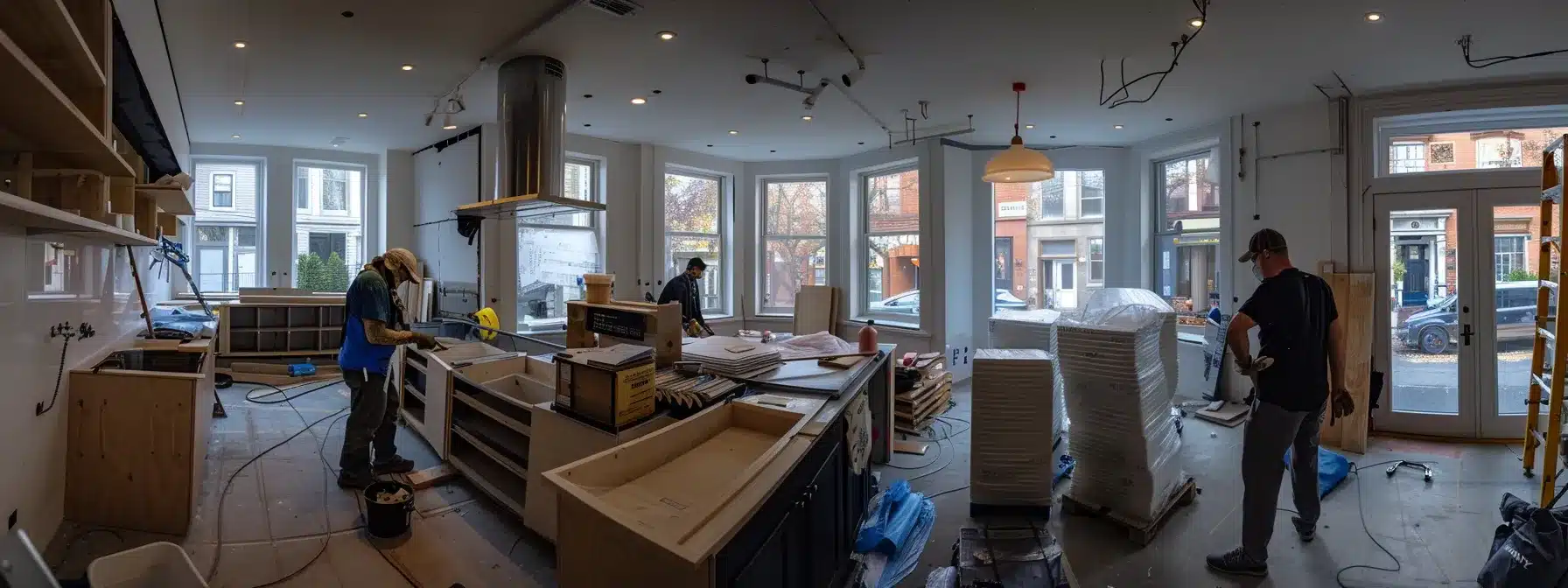
As we dive deeper into the realm of kitchen remodeling, it’s essential for homeowners to develop a comprehensive project timeline and schedule. This critical step ensures that the progress of your kitchen remodel is measurable and within expected timeframes, integrating crucial details like window installations and customized storage solutions efficiently. Equally important is maintaining open communication with your contractors; this not only keeps you informed but also allows for adjustments and refinements, guaranteeing a result that echoes your vision precisely and professionally.
Develop a Comprehensive Project Timeline and Schedule
I’ve seen firsthand the benefits of crafting a comprehensive project timeline that incrementally incorporates renewable energy systems and energy-saving practices. Such detailed planning substantively reduces the overall energy consumption of your kitchen remodel. Segmenting your project into manageable phases, from selecting low-energy LED lighting to opting for appliances that limit electricity use, ensures that every step consciously contributes to a greener living space.
Mapping out a project timeline also means anticipating and mitigating any potential delays in the manufacturing and delivery of eco-friendly materials, such as those free from plastic additives. A precise schedule can effectively streamline the installation process, allowing for the seamless integration of elements such as color-conscious design details that respond to natural light, reducing the need for artificial lighting and further cutting down on energy costs.
Maintain Open Communication With Your Contractors
In my experience, maintaining an open line of communication with contractors is pivotal, especially when discussing intricate features such as a custom pantry or hardwood flooring. I make it a point to clarify details about fitting dimmer switches for ambient lighting or ensuring materials meet LEED certification to foster a transparent and effective workflow. It’s this constant dialogue that ensures the final product matches our combined vision, crafted from sustainable resources like recycled paper-based products.
Moreover, I’ve found that addressing any concerns immediately, whether it be about a delay in the hardwood delivery or the specifics of installing ENERGY STAR-rated appliances, sets a professional tone and fosters mutual respect. In the orchestration of a seamless kitchen remodel, open communication not only anticipates potential issues but also aids in prompt resolution, thereby safeguarding the project’s success and the satisfaction of my client’s needs.
Frequently Asked Questions
What are the first steps to plan my kitchen remodel?
Beginning a kitchen remodel starts with setting a budget, identifying your needs and style preferences, and creating a detailed project plan.
How do I determine a budget for remodeling my kitchen?
Determining a kitchen remodel budget involves assessing home value, desired features, and scope, aiming for 5-15% of the home’s total value to guide spending.
How should I choose a design style for my kitchen?
Selecting a kitchen design style hinges on your aesthetic preferences, lifestyle needs, and the house’s overall architecture for seamless integration and enduring satisfaction.
What materials and appliances are best for kitchen longevity?
For kitchen longevity, opt for quartz countertops, stainless steel appliances, and solid wood cabinetry, as they offer durability and timeless appeal.
Where can I find experienced contractors for my kitchen project?
For reliable kitchen renovation, seek local construction firms with proven track records and glowing client testimonials.
Conclusion
In summary, a successful kitchen remodel hinges on a blend of thorough planning, sustainable material selection, and efficient space design. Allocating your budget with foresight, embracing energy-efficient appliances, and ensuring the expert execution of your vision by skilled contractors are critical for a renovation that is both eco-friendly and stylish. Thoughtful design choices, not only cater to aesthetic preferences but also contribute to long-term environmental sustainability and indoor health. Ultimately, approaching your kitchen remodel with these strategic considerations guarantees a space that is both a pleasure to use and a positive influence on your home’s carbon footprint.





